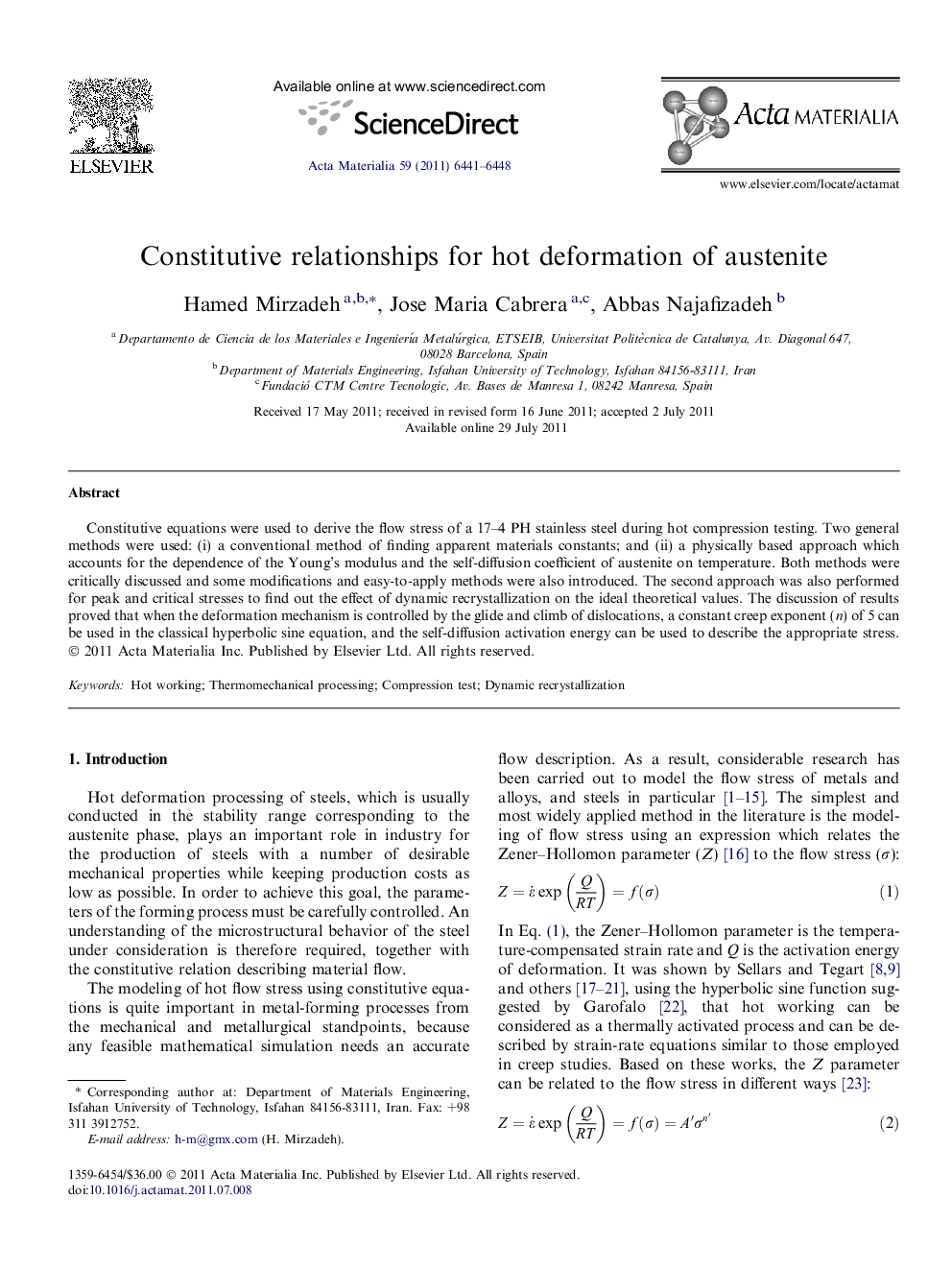| Article ID | Journal | Published Year | Pages | File Type |
|---|---|---|---|---|
| 10620579 | Acta Materialia | 2011 | 8 Pages |
Abstract
Constitutive equations were used to derive the flow stress of a 17-4 PH stainless steel during hot compression testing. Two general methods were used: (i) a conventional method of finding apparent materials constants; and (ii) a physically based approach which accounts for the dependence of the Young's modulus and the self-diffusion coefficient of austenite on temperature. Both methods were critically discussed and some modifications and easy-to-apply methods were also introduced. The second approach was also performed for peak and critical stresses to find out the effect of dynamic recrystallization on the ideal theoretical values. The discussion of results proved that when the deformation mechanism is controlled by the glide and climb of dislocations, a constant creep exponent (n) of 5 can be used in the classical hyperbolic sine equation, and the self-diffusion activation energy can be used to describe the appropriate stress.
Related Topics
Physical Sciences and Engineering
Materials Science
Ceramics and Composites
Authors
Hamed Mirzadeh, Jose Maria Cabrera, Abbas Najafizadeh,
